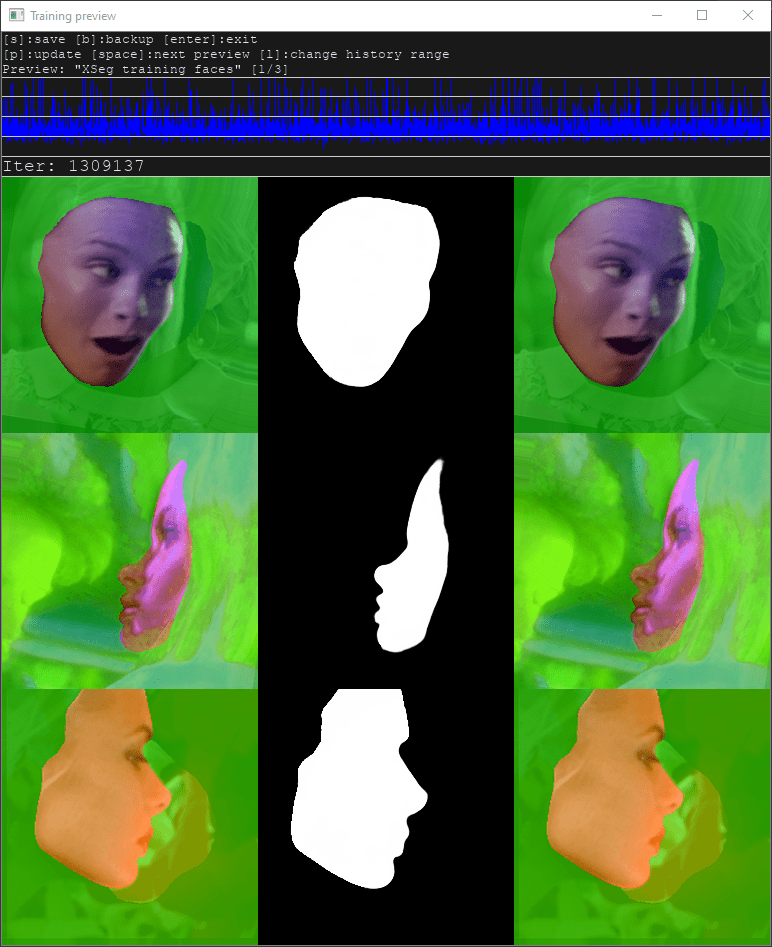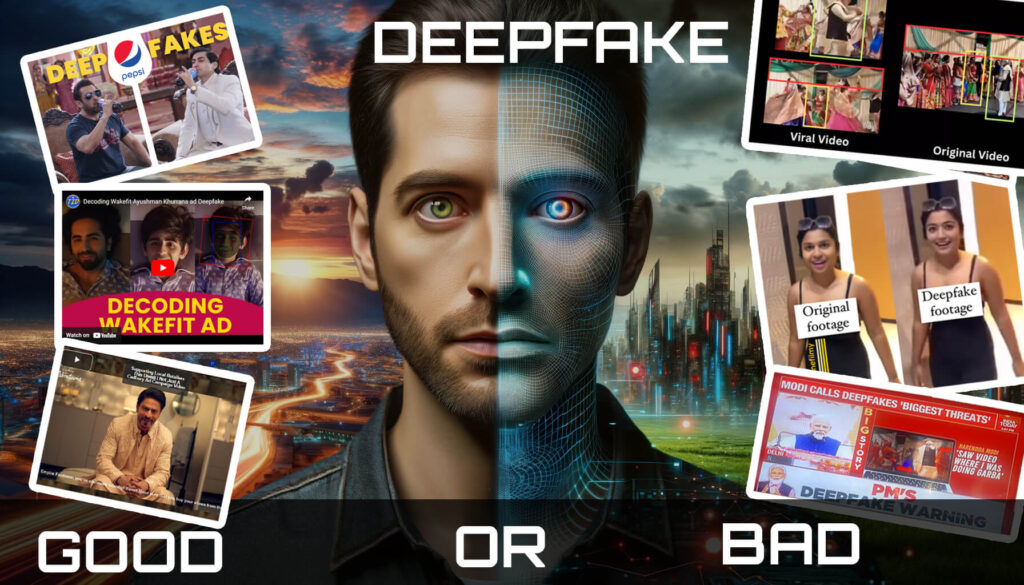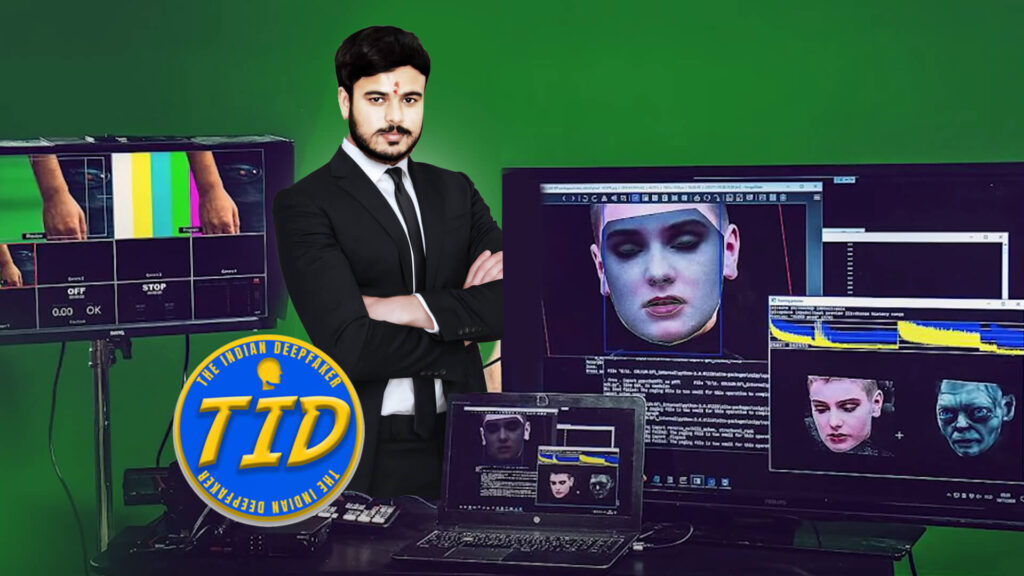Recent events in India, notably involving a DeepFake video of Bollywood actress Rashmika Mandana and a misconceived video of Prime Minister Narendra Modi, have brought DeepFake technology into the national spotlight.
These incidents have catalyzed a significant discussion about the capabilities and ethical considerations of this evolving technology.
What is DeepFake Technology?
DeepFake technology refers to advanced AI-driven methods capable of swapping faces and voices in video content. This technology, once the realm of high-end VFX studios, is now accessible for various creative and personal uses, marking a significant shift in digital content creation.
The Technology Behind DeepFakes
DeepFakes rely on artificial neural networks, particularly Generative Adversarial Networks (GANs). This system comprises two parts: a generator, which creates the images or videos, and a discriminator, which attempts to distinguish between real and fake content.
The relationship between these two can be likened to a teacher and student, where the ‘student’ (generator) learns to create increasingly convincing fakes that the ‘teacher’ (discriminator) struggles to identify.
The learning process of these networks can be compared to teaching a child to draw. If a child tries to replicate an image, they might not succeed perfectly at first. However, if asked to replicate it a million times, their skill would improve significantly, although it would take a lifetime.
In contrast, AI can undergo this iterative learning process, known as ‘iterations,’ millions of times in a matter of days, rapidly advancing its ability to create convincing DeepFakes.

Is this Technology Good or Bad
It’s essential to understand that technology, in itself, is neutral. It’s the people that use it for different purposes to make it look good or bad . Take an example of car: The vehicle is a technological marvel that enables faster travel, yet it is also involved in accidents causing fatalities. Hence, it is not the car – the technology – that is inherently good or bad, but how it is used by people.

Positive Use Cases of DeepFake Technology
DeepFake technology has significantly reduced the costs and expanded the creative possibilities in the film industry. Traditional VFX methods, like those used to complete Paul Walker’s scenes in the Fast and Furious series or de-aging characters in Netflix’s ‘The Irishman,’ were exorbitantly expensive.

- Cost Reduction in Film Production:
- DeepFake technology has revolutionized the film industry by significantly reducing production costs. Traditional methods, such as costly CGI (Computer-Generated Imagery), were once the norm for scenarios like completing Paul Walker’s scenes in the Fast and Furious series (with traditional VFX it costs them more than 10 million dollar).
- With DeepFakes, filmmakers can achieve similar results at a fraction of the cost. This financial efficiency has democratized access to advanced visual effects, enabling smaller productions to compete on a larger scale.
- De-Aging Actors:
- De-ageing has been one of the most prominent use cases where major production houses, including Disney, have tied up with VFX design studios to implement deepfake to de-age.
- From de-ageing Al Pacino and others in ‘Irishman’ to showing a young Mark Hamill as Luke Skywalker in Disney’s Star War series, Ayushman Khurrana in wakefit , Rashmika Mandanna in Tata Tea Ad, Salman khan in pepsi ad, deepfake has found a comfortable place in Hollywood as well as bollywood production.
- Our company de-aged the actor Ayushman Khurrana in an advertisement for Wakefit where the actor was showcased as a child with the help of deepfake. Interestingly, all these point to the increased adoption of deepfakes in film and advertisement industry, where Bollywood actors are slowly embracing it.
- This technology has also been employed in high-profile films like ‘The Irishman,’ where actors like Robert De Niro appeared as younger versions of themselves, enhancing the authenticity of the storytelling.
Reviving Historical Figures:
- DeepFake technology offers the unique ability to bring historical figures back to life on screen. This can be a powerful tool for both entertainment and education.
Imagine witnessing iconic historical personalities, such as Albert Einstein or Abraham Lincoln, delivering speeches or engaging in dialogues on contemporary issues.
Solving Audio Dubbing Challenges:
- The film industry faces a really big challange challenge when translating movies into different languages—audio dubbing. They hire voice artists to dub in different language which costs a lot of money and then also the issue is change in the voice of the original actor and even the lips doesnt sync with the audio dubbed audio doesn’t sync perfectly with the actors’ lip movements, resulting in a disconnect for viewers.
- DeepFakes come to the rescue by voice cloning and synchronizing lip movements with dubbed audio. This ensures that the characters’ expressions match the spoken words, maintaining the authenticity of the original performance.
Accessibility and Affordability:
- Previously, creating high-quality visual effects and DeepFake content required substantial computational resources and technical expertise.
However, for social media content and smaller-scale projects, accessibility has increased dramatically. Today, numerous user-friendly applications enable individuals to create basic DeepFakes with a single image and minimal effort.
How TID started its journey from side hustle to an startup providing services worldwide.
The genesis of The Indian Deep Faker can be traced back to a moment of inspiration from the music video “Action” by the Black Eyed Peas. The innovative use of DeepFake technology in this video sparked our curiosity and led us down the path of exploring and mastering this technology.
• Learning and Innovating: Our journey began with learning about DeepFake technology, a process that involved understanding complex AI systems. We were fascinated by the potential of this technology to revolutionize content creation. This led to experimenting with our own creations and gradually attracting a clientele that appreciated our unique skills.
• Transforming the Industry: One of the most significant turning points in the use of DeepFake technology was the completion of Paul Walker’s scenes in ‘Fast and Furious 6’ using traditional CGI, a process that cost approximately 25 million dollars. This highlighted the enormous potential for cost reduction that DeepFake technology could bring to the film industry, reducing expenses by up to 99%.
• Collaborations and Projects: Our company has collaborated with prestigious names like Netflix and research universities, including New York University, in developing DeepFake detection algorithms. We’ve also worked with Bollywood celebrities such as Rashmika Mandana and Ayushmann Khurrana, and undertaken projects for various films.
• Aiming for AI Automation and Awareness: We have now transitioned into focusing on AI automation.
From our initial days, we have been consistent in watermarking our videos, with the aim of raising awareness about DeepFake technology. It’s crucial, especially in less technologically exposed regions like tier 2 and tier 3 cities of India, where people might not be aware that videos can be artificially manipulated.Our mission is to enlighten people about the potential of AI to create believable yet fabricated content.
Is Banning DeepFakes the Solution?
The call to ban DeepFake technology has been a topic of debate, especially in the wake of the recent controversies. However, considering the open-source nature of this technology, outright banning may not be a practical solution.
DeepFake tools are widely accessible, and their use is not confined within geographical boundaries, making enforcement of such a ban challenging.
Proposed Solutions and Guidelines
Awareness and education are crucial in addressing the challenges posed by DeepFakes.
Especially in regions like India’s tier 2 and tier 3 cities, where knowledge about this technology is still limited, raising awareness can help prevent the spread of misinformation.
Collaborating with social media platforms to detect and flag DeepFake content is a positive step. Additionally, integrating blockchain technology could offer a way to authenticate content and find out its source.
Implementing guidelines is also essential. These might include mandating watermarks on AI-generated content to clearly indicate DeepFakes and obtaining consent from individuals whose likenesses are used in creating DeepFakes.
These measures could help in managing the ethical use of this technology.
Conclusion
DeepFake technology, like any other, is a tool whose impact depends on how it is used. While it presents significant creative and innovative opportunities, it also poses ethical and societal challenges.
Navigating this landscape requires a balanced approach, emphasizing responsible use, public awareness, and robust regulation. The journey of The Indian Deep Faker exemplifies how positive engagement with DeepFake technology can lead to groundbreaking applications, underscoring the need for a nuanced understanding of this powerful tool.
If you want to know more about this technology and want to work on deepfake detection programs you can contact us https://theindiandeepfaker.com

